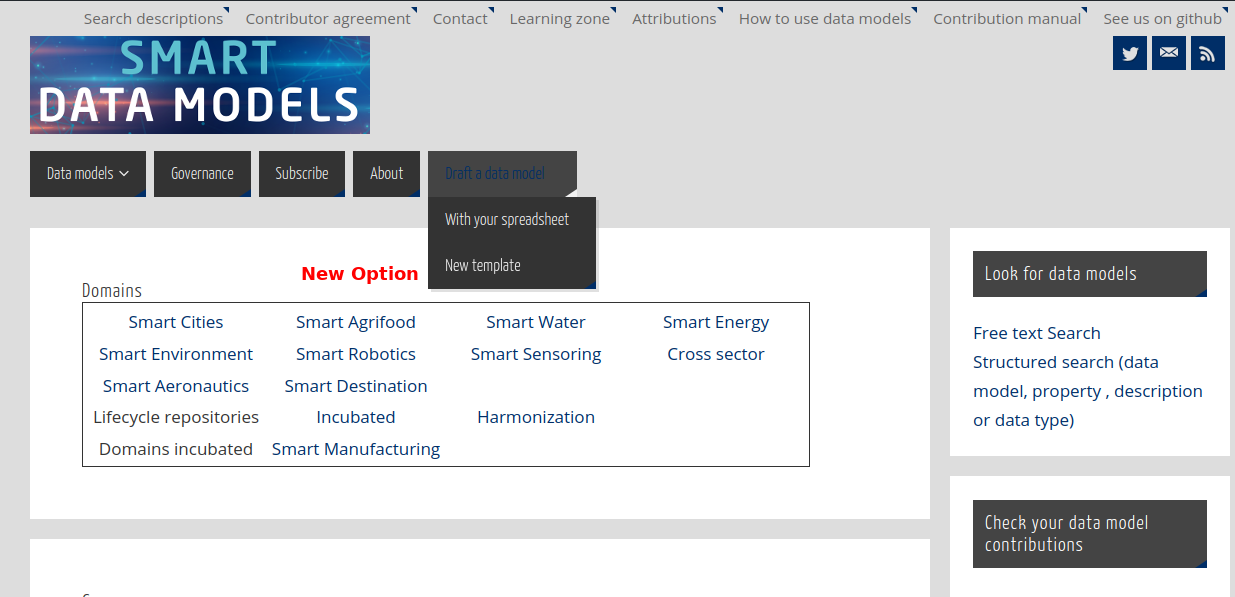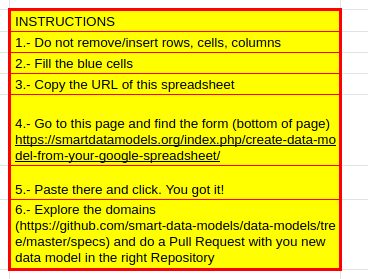Category: Smart Robotics domain
Include userAlias in common-schema.json
The file common-schema.json compiles those properties massively used across the different data models in the different domains.
The property userAlias has been included to store those anonymous identifiers of a user that cannot be traced back to the user.
It can be referenced in any data model just by including this code
“userAlias”: {
“$ref” : “https://smart-data-models.github.io/data-models/common-schema.json#/definitions/userAlias”
}
Updated the contribution manual
This a general review of the contributions’ manual with these changes:
- Recommendation how to document a property that is an object referencing to a shared schema
- Change order in the elements (schema recommendation is the most demanded documentation and it is being placed at the beginning)
- Minor reviews, contact point, etc.
Located in the upper menu of the site.
Update the database for searching properties and descriptions
It has been updated the database for searching properties, two main improvements:
- Performance (now it is a database query instead of the former static file)
- The reference model of the property
- The format (uri, date-time, etc) for string properties.
New data MotionDeviceSystem for OPCUA subject
OPCUA is a protocol for machine to machine communication and there is a specific subject for mapping this standard with NGSI is being developed.
MotionDeviceSystem: provides a representation of a motion device system as an entry point to the OPC UA device set. This instance organizes the information model of a complete robotics system using instances of the described ObjectTypes. A motion device system may consist of multiple motion devices, controllers, and safety systems
Alpha version of the service for generating an NGSI-LD payload based on a Smart Data Model
This is an alpha version (so you can expect errors and not being complete). Use it at your own risk. Please report errors and suggestions at info@smartdatamodels.org
Call: https://smartdatamodels.org/extra/ngsi-ld_generator.php
Parameters: (Mandatories)
- schemaUrl: The link to the RAW version of the json schema (see example)
- email: your email
Use any data model from Smart Data Models initiative and paste it into the form. Then you’ll get a page with a random payload compliant with the data model. Refresh for more.
You can also use this form
New Subject OPC UA standard in Smart Robotics domain
A new subject is being created for the integration of OPC UA standards for the Smart robotics domain.
Initially, there is a data model already in the incubated repository that hopefully will be validated soon and it will become official.
Update 25-5-2021: The data model has been officially released here https://github.com/smart-data-models/dataModel.OPCUA/tree/master/MotionDeviceSystem.
Script for checking a data model submission
In the directory utils of the umbrella repository data-models there is a new python script that checks if a schema is properly documented and if the payload is correctly located and validates against the schema.
New option for drafting a data model
In the front page, there is a new option that allows you top to directly create a copy of the template sheet for creating new data models.

Remember that this spreadsheet is done for those unfamiliar with json schema (the official format for the smart data models) to allow them to create a new data model from their knowlege.
The use instructions are in the spreadsheet

Any doubt please let us know at info@smartdatamodels.org
Updated context.jsonld
The context.jsonld for smart data models has been updated to meet json ld requirements. Now they are implementing geojson requirements.
It affects the terms of bbox and coordinates. It could impact those elements having a geoproperty (most of the data models).





